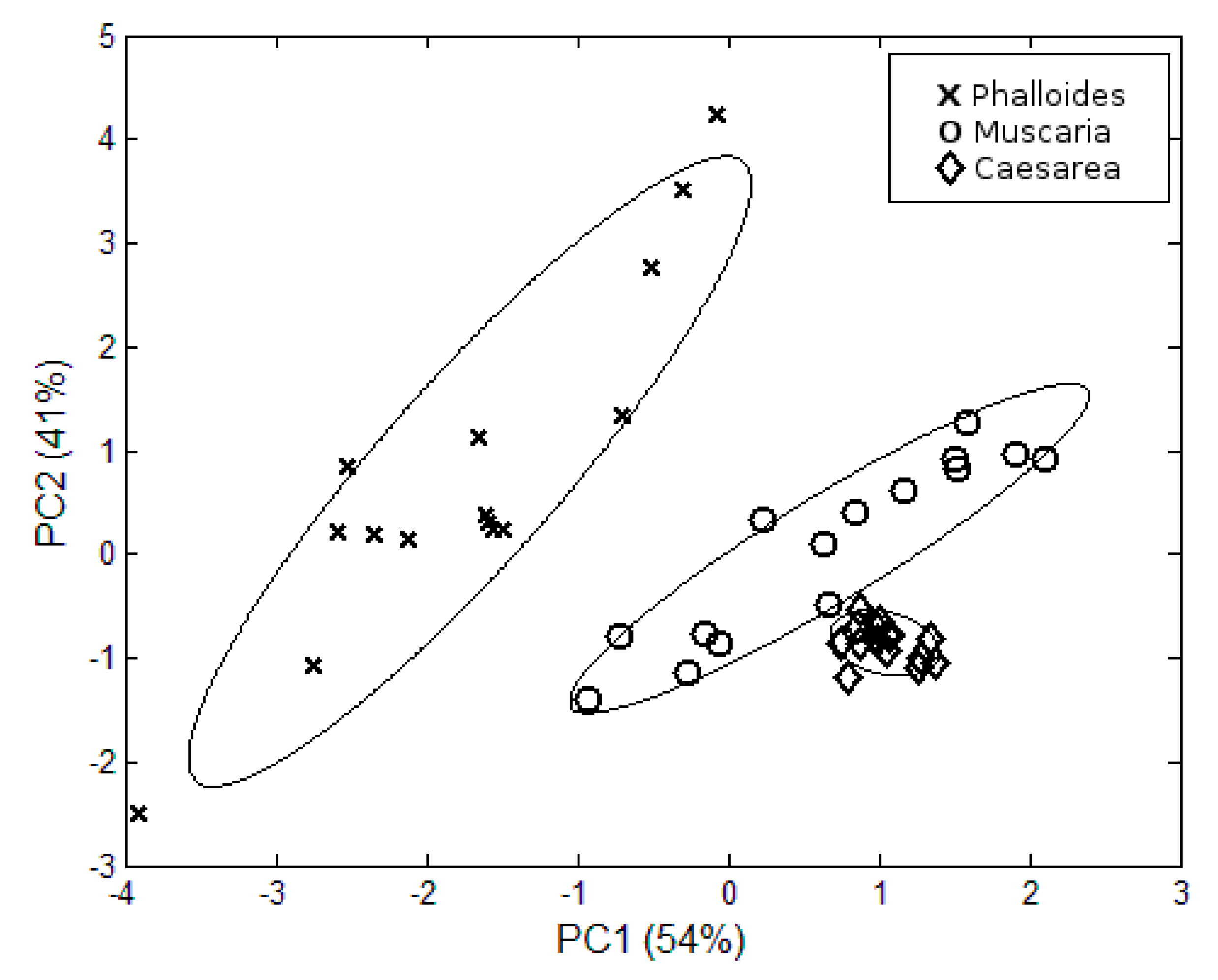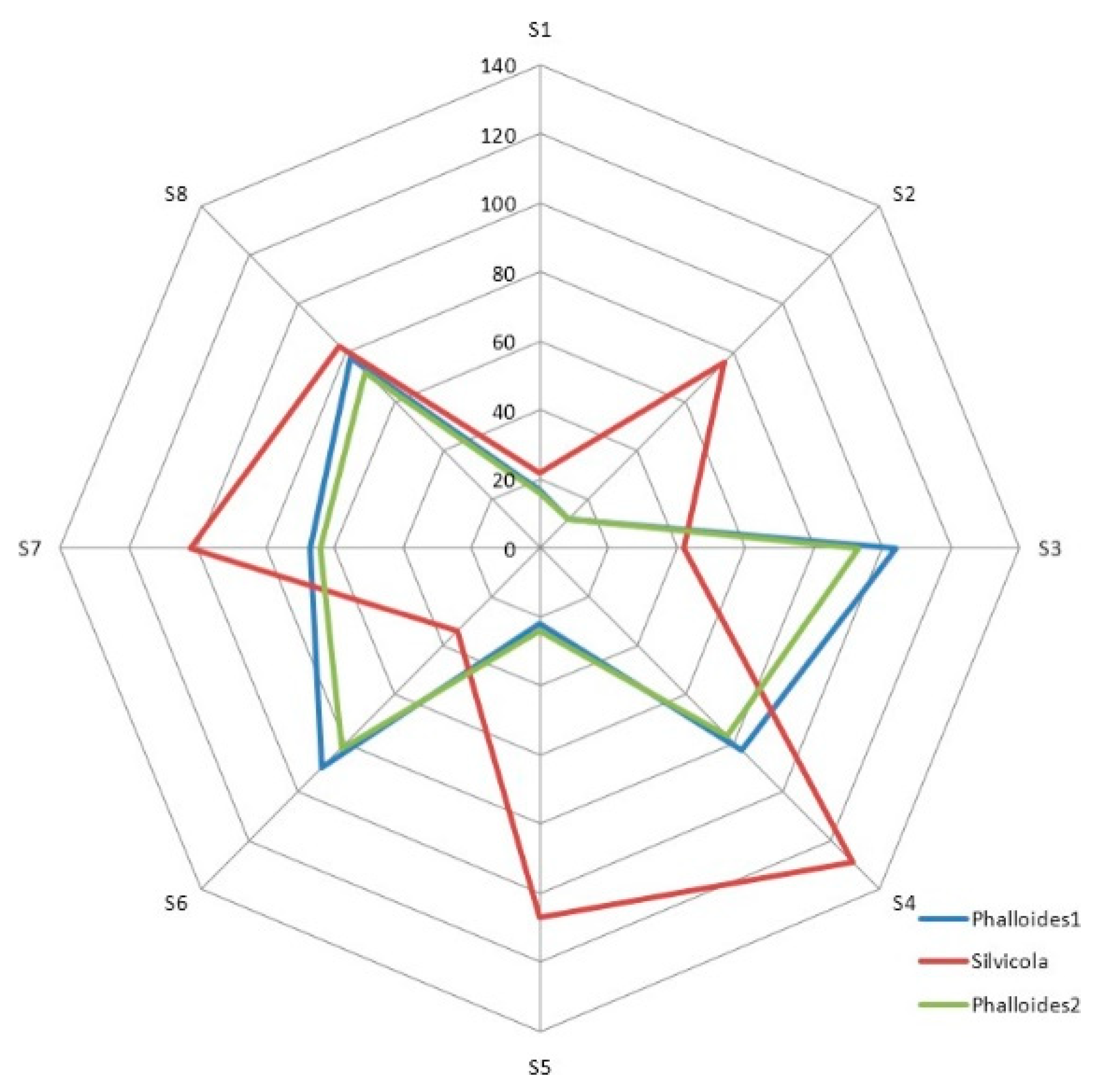Identification of Poisonous Mushrooms by Means of a Hand-Held Electronic Nose †
Abstract
:1. Introduction
2. Material and Methods
3. Results
References
- Sánchez, C.; Santos, J.P.; Lozano, J. Use of Electronic Noses for Diagnosis of Digestive and Respiratory Diseases through the Breath. Biosensors 2019, 9, 35. [Google Scholar] [CrossRef]
- Pardo, L.F.M.; Acosta, A.P. Detection of explosives with animal aid: a review of scientific literature. Logos Sci. Technol. Mag. 2009, 1, 106–118. [Google Scholar]
- Santos, J.; Aleixandre, M.; Arroyo, P.; Suarez, J.I.; Lozano, J. An Advanced Hand Held Electronic Nose for Ambient Air Applications. Chem. Eng. Trans. 2018, 68, 235–240. [Google Scholar]


© 2019 by the authors. Licensee MDPI, Basel, Switzerland. This article is an open access article distributed under the terms and conditions of the Creative Commons Attribution (CC BY) license (https://creativecommons.org/licenses/by/4.0/).
Share and Cite
Portalo-Calero, F.; Lozano, J.; Meléndez, F.; Arroyo, P.; Suárez, J.I. Identification of Poisonous Mushrooms by Means of a Hand-Held Electronic Nose. Proceedings 2019, 14, 33. https://doi.org/10.3390/proceedings2019014033
Portalo-Calero F, Lozano J, Meléndez F, Arroyo P, Suárez JI. Identification of Poisonous Mushrooms by Means of a Hand-Held Electronic Nose. Proceedings. 2019; 14(1):33. https://doi.org/10.3390/proceedings2019014033
Chicago/Turabian StylePortalo-Calero, Francisco, Jesús Lozano, Félix Meléndez, Patricia Arroyo, and José Ignacio Suárez. 2019. "Identification of Poisonous Mushrooms by Means of a Hand-Held Electronic Nose" Proceedings 14, no. 1: 33. https://doi.org/10.3390/proceedings2019014033
APA StylePortalo-Calero, F., Lozano, J., Meléndez, F., Arroyo, P., & Suárez, J. I. (2019). Identification of Poisonous Mushrooms by Means of a Hand-Held Electronic Nose. Proceedings, 14(1), 33. https://doi.org/10.3390/proceedings2019014033






